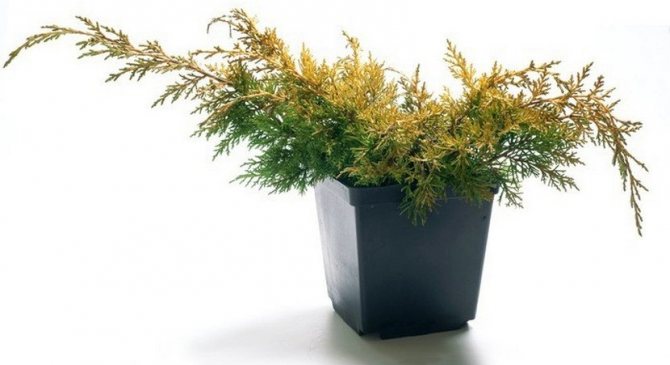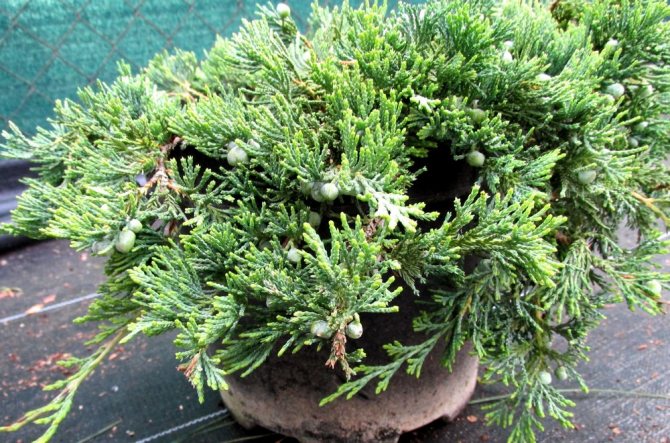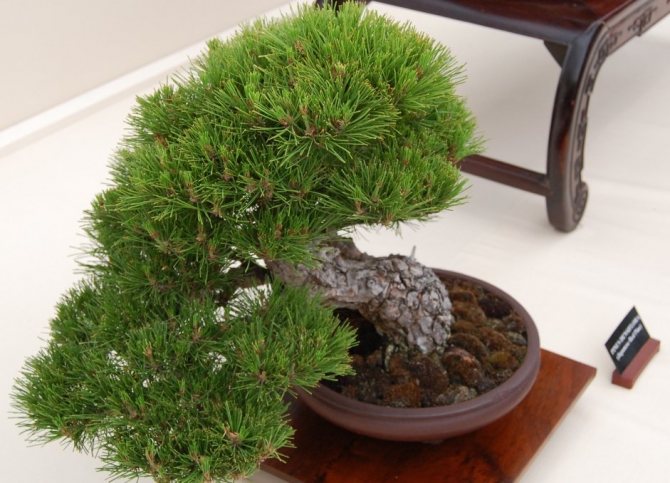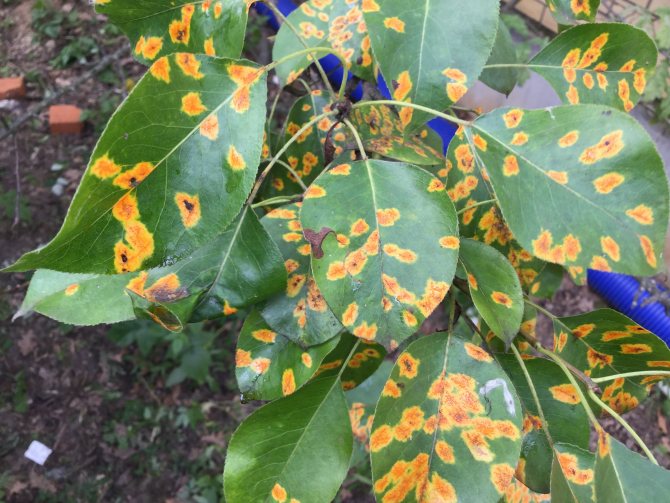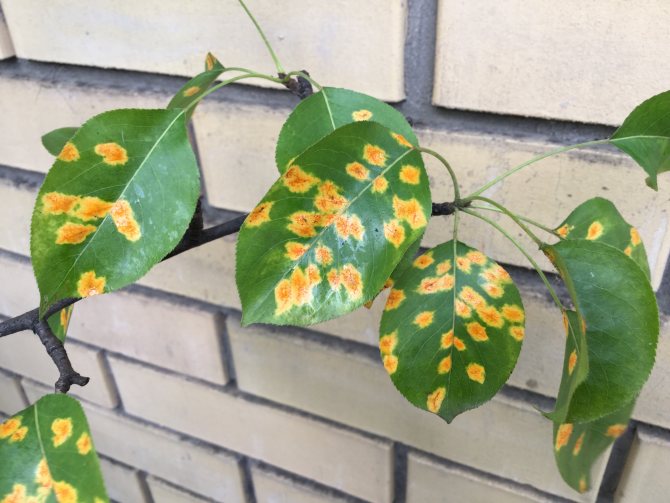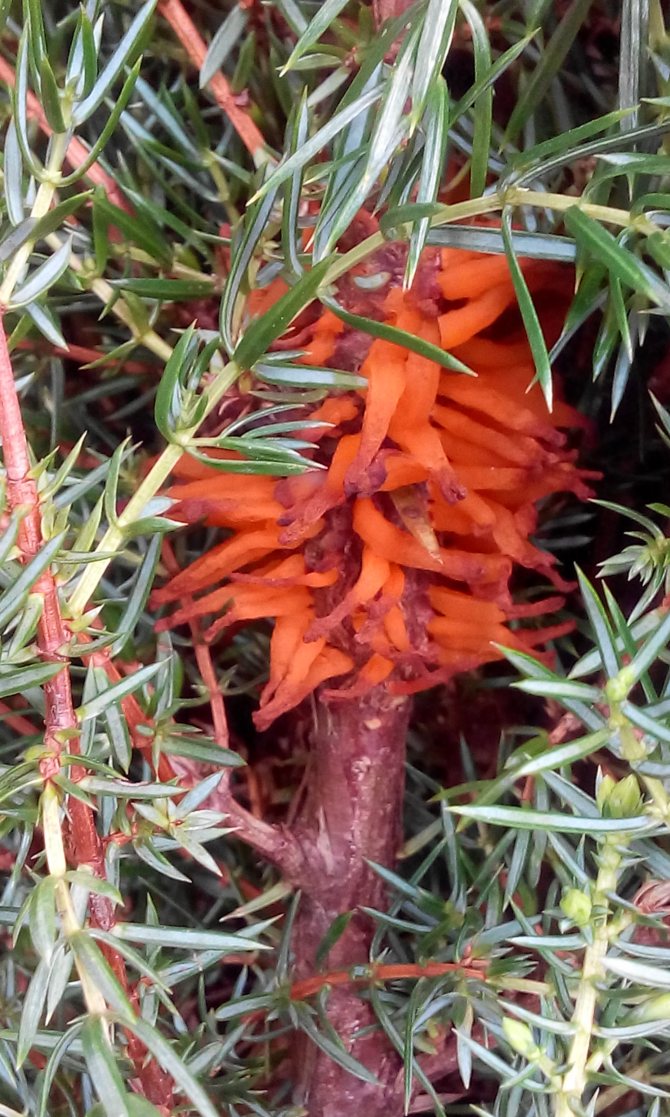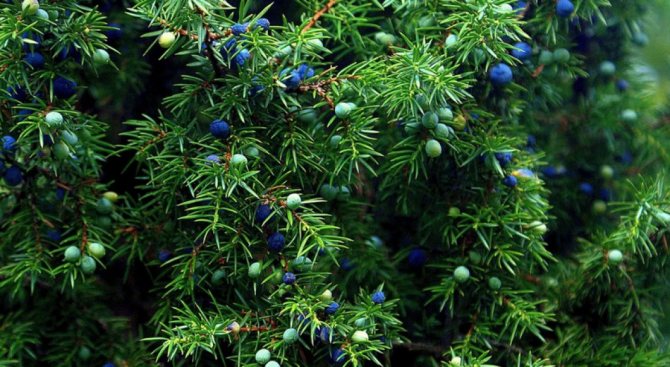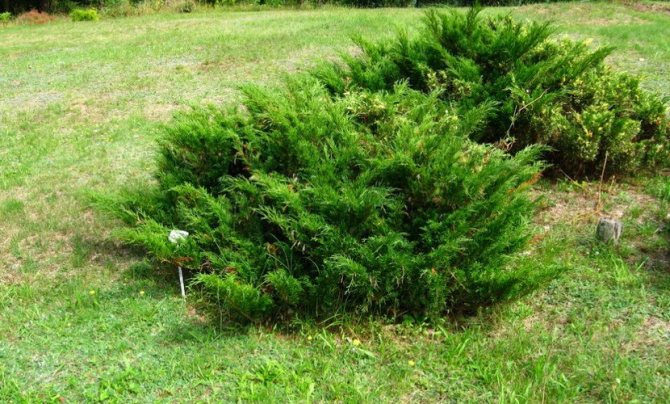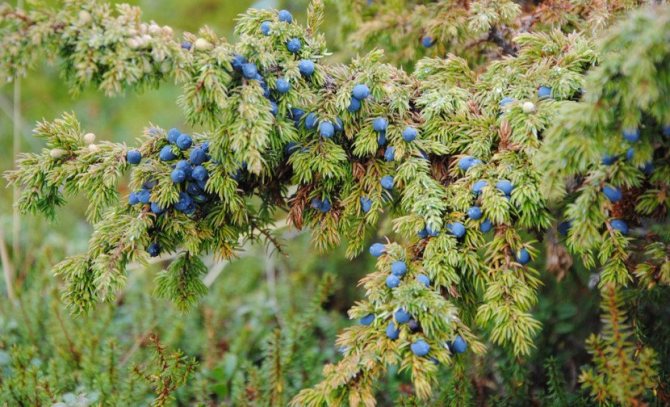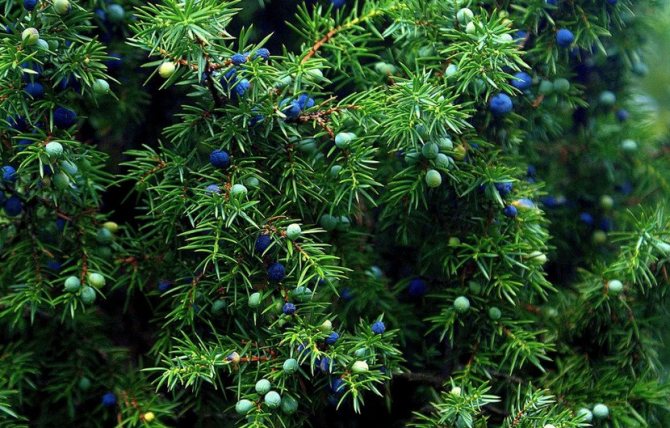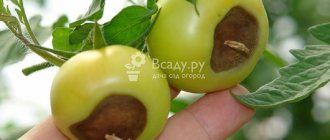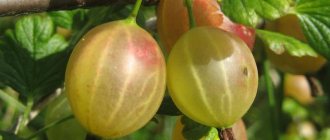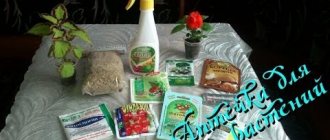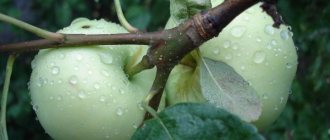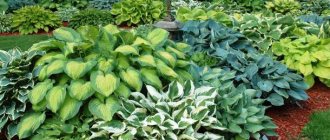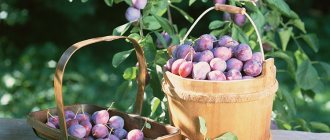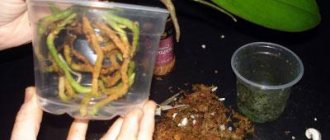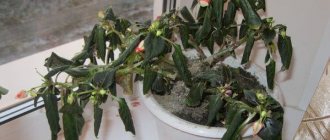- Biotorella cancer of juniper branches: treatment and control measures
- Biotorella Juniper Cancer Control Measures
- Nectriosis, or necrosis of the bark of juniper branches: treatment and control measures
- Drying of juniper branches: treatment and control measures
- Juniper rust: treatment and control measures
- Juniper Rust Control Measures
- Juniper shute: treatment and control measures
- Juniper diseases: shute brown - signs of illness and treatment
- Juniper Alternaria: Signs of the Disease and Treatment
- Fusarium juniper: signs of the disease and treatment
- Video: Remember Juniper Disease
It would seem that juniper is one of the most problem-free conifers in the garden, but it turns out that it also has its own ailments. Sometimes, especially after winter, you can see a branch with brown needles on a juniper. This means that the juniper is sick. The dying off of branches, yellow or brown needles can be the result of several juniper diseases.
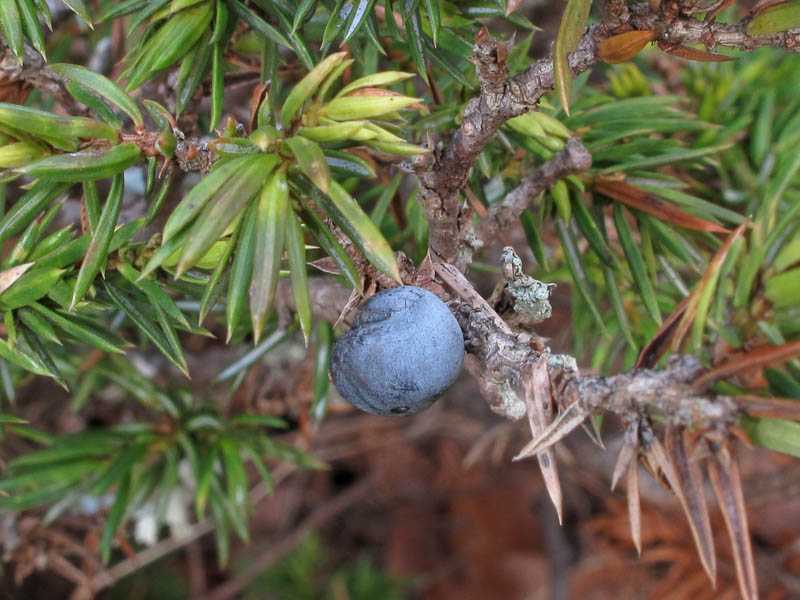
Juniper disease: signs and treatment.
Biotorella cancer of juniper branches: treatment and control measures
When biorella cancer on the bark of the affected branch, you can see a deep ulcer, due to which a separate branch of the juniper dries out.
The causative agent of the disease is the pathogenic fungus Biatorella difformis (Fr.) Rehm., The conidial stage of the fungus Biatoridina pinasti Gol. et Sch.
With mechanical damage to the branch or bark of a juniper, pathogenic fungi enter the wound and begin to develop there. Some cause necrosis of the bark, the latter are the causative agents of stem rot.
Cuttings of conifers in winter: (read more)
Once on the damaged area, the fungi spread in the tissues of the bark. The bark begins to turn brown, wither away. A deep ulcer forms on the damaged area, in which the black fruiting bodies of the fungus are formed.
The dying off of the bark on the branch leads to the fact that all the needles on it turn yellow and dry out. Biotorella cancer also affects other conifers.
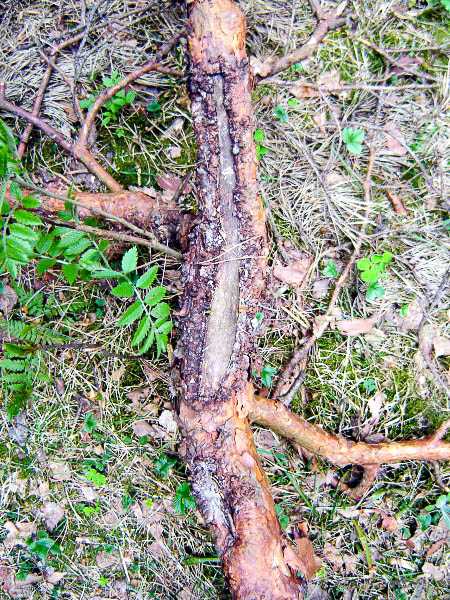

Biotorella crayfish on a pine tree.


Cancer ulcer on the trunk.
Juniper description
The plant belongs to the genus Juniper, Cypress family. This is a coniferous evergreen specimen, which can be represented by both arboreal and shrub forms. It all depends on the climatic conditions in which the juniper is cultivated. In northern latitudes, it is represented by shrub forms, in southern latitudes - tree-like. The former reach a height of 1–3 m, the latter 8–15 m.
The bark is dark gray or gray-brown, scaly. The shoots are reddish. The needles are small, triangular, 1.5 cm long. Covered with a layer of wax coating. It is he who gives various shades to the needles. The color palette can range from greenish blue to light green and golden.
Important! When growing monoecious junipers, in order to get a harvest, 2 or more heterosexual plants should be planted in the area. Otherwise, pollination will not occur.
Flowering occurs in May or June, depending on the climate. Junipers can be either dioecious or monoecious. The difference is that the former form both male and female flowers, while the latter form only female or only male flowers.


The male flowers are yellow spikelets, and the female flowers are green buds.The cones are round, reaching a diameter of 10 mm. When ripe, they are painted in a bright blue color. Covered with a layer of wax coating. Ripening lasts 3 years. Each berry contains 2 or 3 seeds. The pulp of the fruit has a spicy coniferous aroma, sweetish aftertaste, contains a large amount of juice.
Also find out if the juniper is poisonous.
Biotorella Juniper Cancer Control Measures
Dried juniper branches need to be cut to healthy tissue, all wounds and sections should be treated with a solution of copper sulfate, 1% solution of Bordeaux mixture (you can use substitutes - HOM, Abiga-Peak). Affected branches must be destroyed to prevent the spread of the fungus.
For prevention: in case of mechanical damage to the bark or pruning of juniper branches, immediately cover all cuts and wounds with garden pitch. Every spring, after the snow melts, and every autumn, treat the juniper with a 1% solution of Bordeaux mixture or its substitutes, if necessary, the same treatment is carried out in the summer.
Is it necessary to cover the rocky blue-arrow juniper Somehow. Coniferous plant care - juniper
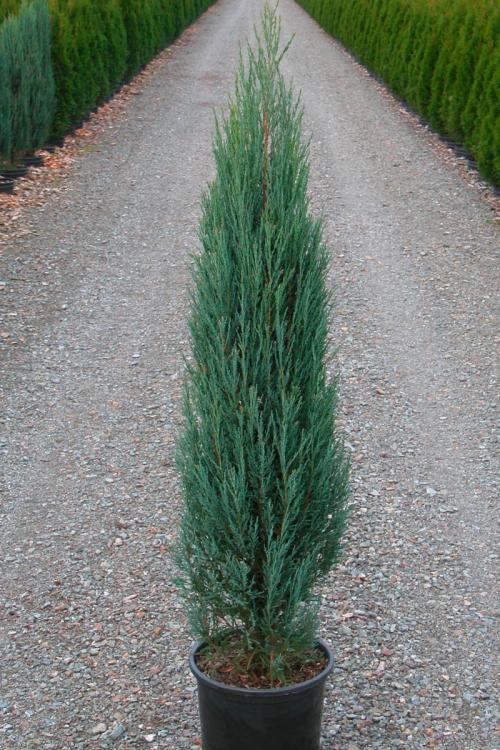

Many gardeners find that caring for a rocky juniper is very simple. The plant feels great with little or no human intervention. The unpretentiousness of this plant allows it to be grown even on rocky soil or in sandy soil, poor in nutrients. The only environment in which Munglow juniper and other varieties (for example, Springbank, Wichita Blue, Fisht) will not survive, are wetlands or acidified places.
The attitude to the cold of a juniper depends on the type of plant itself, as well as its age. Most of the varieties used in landscape design perfectly adapt to cold weather, easily tolerate frost. If the Munglow Rock Juniper or a representative of another variety has been planted recently, it must be covered for the winter. For this purpose, spruce branches or non-woven fabric can be used.
Some columnar and cone-shaped varieties can suffer from the severity of the snow, so experts advise tying the plant in late autumn so that the shoots pressed against the trunk do not break.


Watering should be carried out only during a prolonged drought, as well as in the first season after planting. An adult plant, even in a very dry summer, should not be watered more than three times during the entire season. In the evening, you can spray the needles with warm water. Blue Arrow rocky juniper and others do not need feeding. This species belongs to drought-resistant varieties, which does not tolerate waterlogging and stagnant excess moisture. Most junipers tolerate shearing well, which allows them to add zest and originality to the landscape. Even if the plant does not need to be shaped, dry branches must be carefully removed.
Around young specimens, it is required to periodically loosen the ground after weeding and watering. If you need to transplant a juniper, you should wait until spring before bud break or fall.
Nectriosis, or necrosis of the bark of juniper branches: treatment and control measures
This disease is also considered cancerous. The causative agent of the disease is the fungus Nectria cucurbitula (Tode) Fr., the conidial stage of the fungus Zythia cucurbitula Sacc.
With mechanical damage to the bark on the branch of a juniper, brick-red fruit bodies are formed at the site of the lesion, sporulation up to 2 mm in diameter, over time they turn black and dry out. The affected branch turns yellow and gradually dries up. The mycelium remains in the bark of affected branches and plant debris.
Control measures with necrosis of the bark of juniper branches are the same as with biotorella cancer.


Nectriosis, or necrosis of the bark of branches.


Nectriosis, or necrosis of the bark of branches.
The benefits of a plant for humans


People have long paid attention to the useful properties of this representative of the Cypress family. The presence of juniper in the apartment will contribute to the creation of a unique atmosphere of comfort. Households who inhale its pine scent will certainly feel calm, and their sleep will become pleasant and strong.
The cone berries of the plant contain a huge amount of healing substances, due to which they are used to prepare various healing decoctions and potions. In particular, the correct use of drugs based on them helps to improve the functioning of the urinary tract.
With the help of juniper resins, a whole range of skin diseases can be cured.
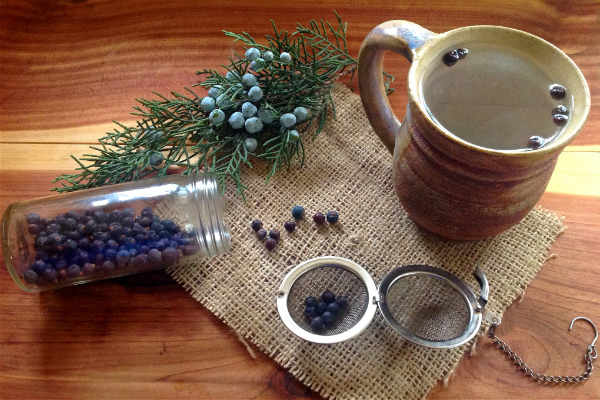

Taking drugs based on branches, needles of a plant will help in the fight against a number of ailments of viral origin.
The intake of fresh berries relieves the condition of a large, suffering from stomach ulcers. The use of a decoction prepared from them makes it possible to cure liver diseases, rheumatism. Since ancient times, breastfeeding mothers have used juniper tincture to increase the lactation of milk.
Growing a juniper at home will be a lot of fun. The contemplation of this beautiful plant will bring aesthetic pleasure, and its wonderful aroma will contribute to the improvement of the atmosphere of the home. We advise you to view the article: Planting cherries with the main methods and rules for caring for it.
Juniper (from Lat. Juniperus) is a representative of the genus of evergreen conifers and shrubs of the Cypress family (Cupressaceae). This family includes more than 60 species of dioecious or monoecious plants. The growing area of junipers covers the entire Northern Hemisphere - from the polar zone to the mountainous tropics.
Drying of juniper branches: treatment and control measures
The causative agents of branch drying are several fungi: Cytospora pini Desm., Diplodia juniperi West., Hendersonia notha Sacc. et Br., Phoma juniperi (Desm.) Sacc., Phomopsis juniperovjra Haahn., Rhabdospora sabinae Sacc. et Fautr.
In case of mechanical damage to the branch, the fungus penetrates into the tissues of the bark. The bark dies off, the needles turn yellow and fall off. At the site of the branch lesion, the formation of black fruiting bodies of the wintering stage of the fungus can be observed. A thickened planting contributes to the spread of the disease.
Control measures with drying out of juniper branches are the same as with biotorella crayfish.
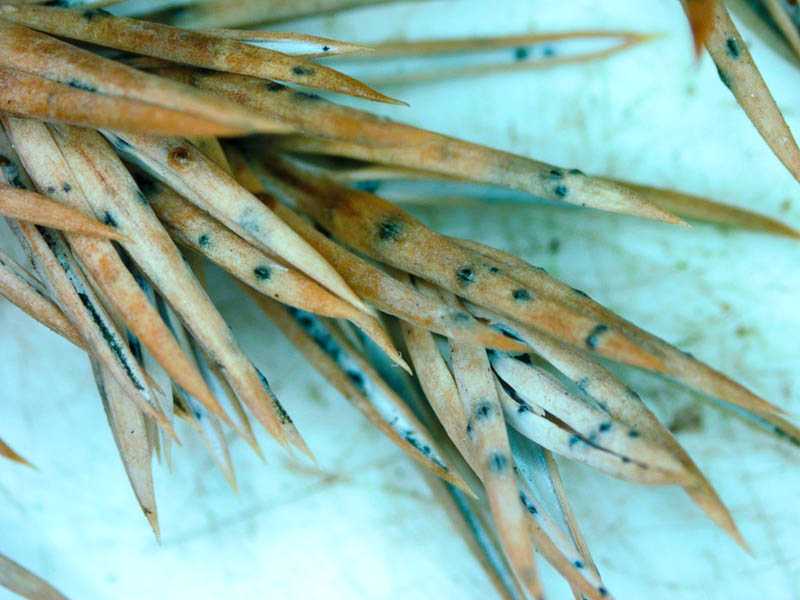

Drying of juniper branches.
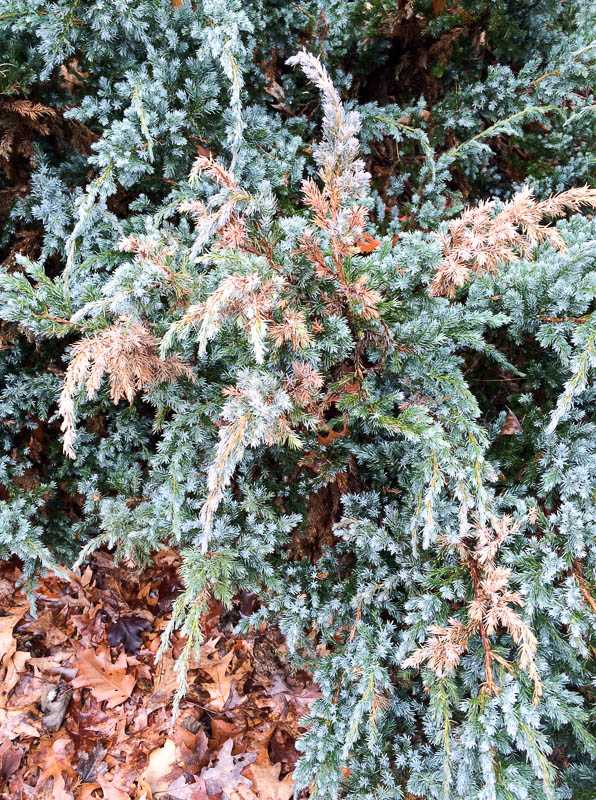

Drying of juniper branches.
What to do if a juniper dries up at home
There are several reasons for yellowing and drying out of indoor juniper branches:
- lack of nutrients;
- excessive dryness or moisture in the soil;
- lack of full drainage;
- the introduction of fungi or pests.
After determining the reason why the home juniper is drying, it is necessary to take the necessary measures - to treat with drugs against pests, reduce or increase watering, change the soil substrate, drain and transplant the plant or carry out its full dressing.


Juniper rust: treatment and control measures
In spring, on the branches and needles of juniper, you can see convex yellow-brown gelatinous rounded formations - sporulation of the rust fungus Gymnosporangium confusum Plowr., Gymnosporangium Juniperinum Mart., Gymnosporangium sabinae (Disks.) Wint.
Juniper branches at the site of rust damage over time thicken, deform and crack.
At the beginning of autumn, the orange pustules darken, the wintering stage of the fungus develops. The rust fungus hibernates not only in the affected juniper bark, but also on other plants and plant debris.
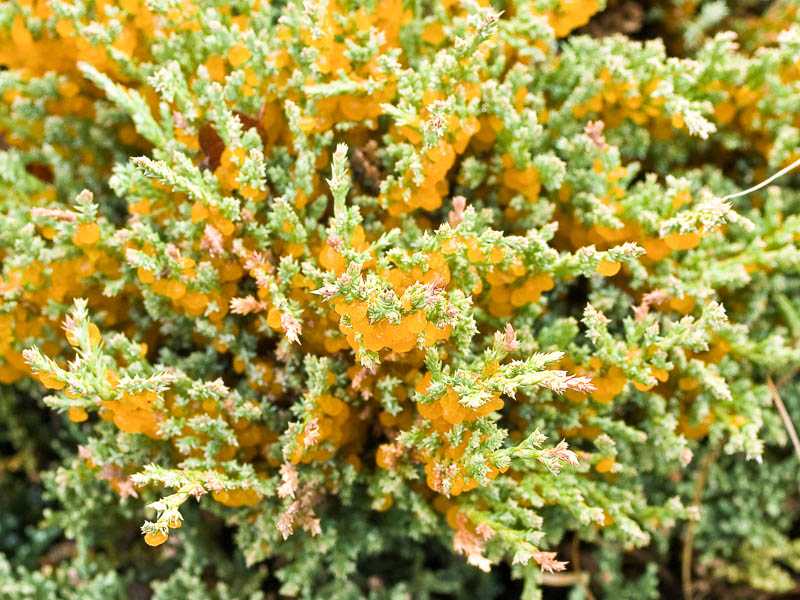

Juniper rust.
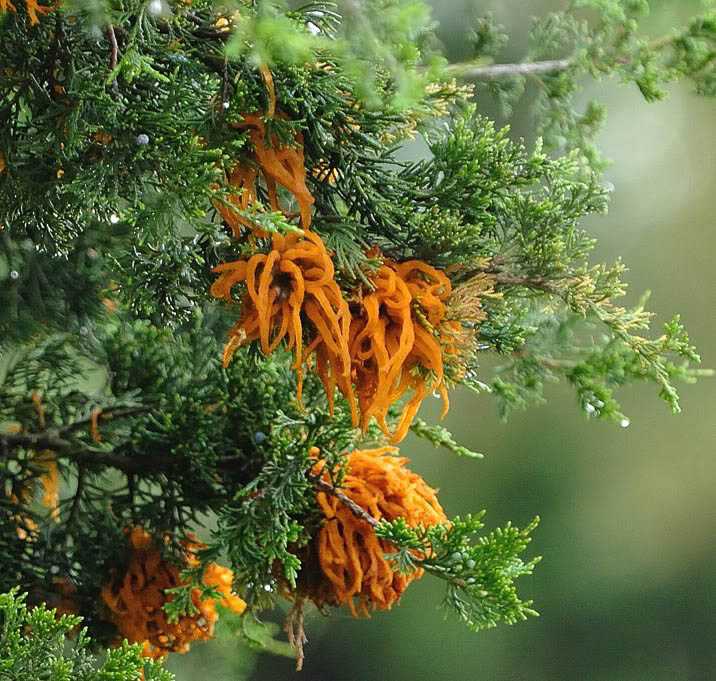

Juniper rust.
How to plant a juniper at home
If you live in a northern latitude with a cool climate, then it will not be difficult for you to go to the nearest forest and dig up a young juniper bush there. After that, the plant can be taken home and planted in a pot. If you live in a region where junipers do not grow in the wild, then the necessary seedling can be purchased at any major market. But it's one thing to find a seedling, and quite another to learn how to plant a juniper at home.
How to prepare the soil for planting juniper
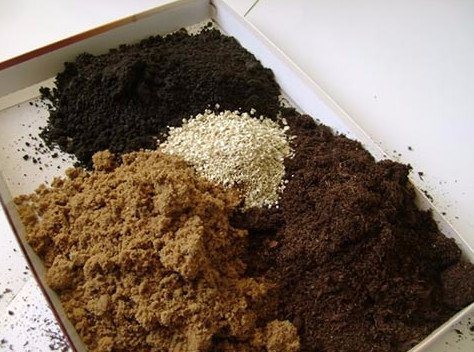

Many beginner flower growers believe that the juniper is not whimsical at all to the soil. But this is not entirely true, before planting juniper in the ground, it is necessary to add a nutrient mixture. This mixture includes turf, peat and sand. In addition, it is advisable to add 200 g of nitrophoska and any universal fertilizer to the soil (can be purchased at a flower shop). Juniper planting is carried out only in a pot with an additional layer of drainage at its bottom.
Planting juniper at home
Make a hole in a pot with pre-prepared soil 2 times the depth of the entire plant. If the root system of the juniper contains an earthen ball, make sure that when planting it is 8 centimeters above the bottom of the planting hole. Hold the plant and gently cover the hole with soil. After that, lightly tamp the topsoil and sprinkle it with mulch (you can use humus or peat).
Important! Spray the crown of the juniper regularly until it takes root in its new location.
Juniper Rust Control Measures
At the first detection of rusty spots, you must immediately remove the affected juniper needles and treat with fungicide preparations with contact and systemic activity, such as Topaz, Ordan, Folikur, Falcon, Fundazol. All affected plant debris must be destroyed.
As a preventive measure, in early spring and autumn, spraying with a 1% solution of Bordeaux or Burgundy liquid, iron or copper sulfate should be carried out.
In the fall, it is necessary to remove plant debris and fallen leaves in the garden, since pathogens of not only rust, but also other diseases can winter on them.
Juniper: varieties for growing in a pot
Juniper is a plant that can be grown in a pot without much difficulty. Such cultivation can be done at home, the main thing is to choose the right variety. Cultivars such as Chinese juniper and hard juniper are ideal. In nature, these varieties are able to grow to a fairly large size. At home, such junipers grow rather slowly, but subject to the temperature and humidity level, they feel quite well.
Did you know? Under favorable conditions, the juniper can grow for 600-3000 years.
Juniper shute: treatment and control measures
Schütte causes browning and drying of juniper needles. The causative agent of the disease is the fungus Lophodermium juniperinum (Fr.) deNot.
In the spring, in the month of May, the needles suddenly turn brown on last year's juniper shoots, but they do not crumble for a long time. A black bloom appears on brown needles - this is the formation of black shiny fruiting bodies of the pathogenic fungus.
At risk are weakened plants, as well as those planted in the shade. Schütte develops very quickly in conditions of high humidity and can lead to the death of a juniper. The harmfulness of juniper shute increases several times with prolonged melting of high snow cover. The infection persists in plant debris.
Control measures with juniper shute are the same as with biotorella crayfish.
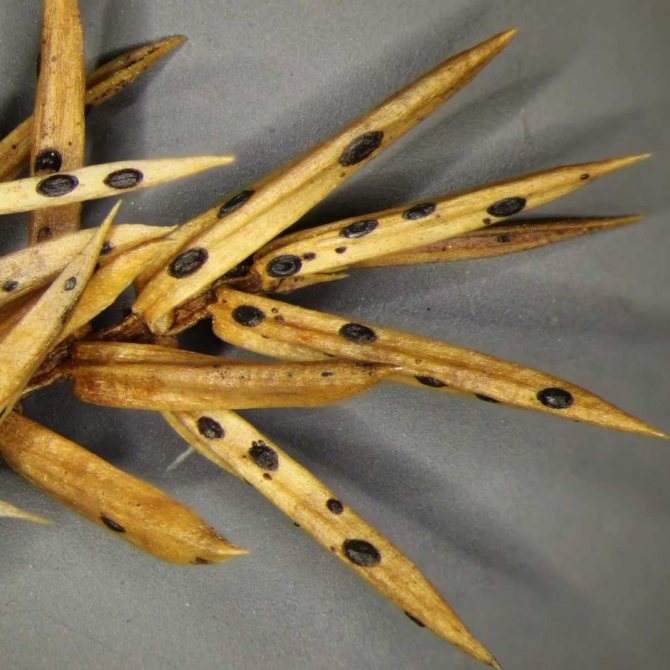

Shute on conifers.
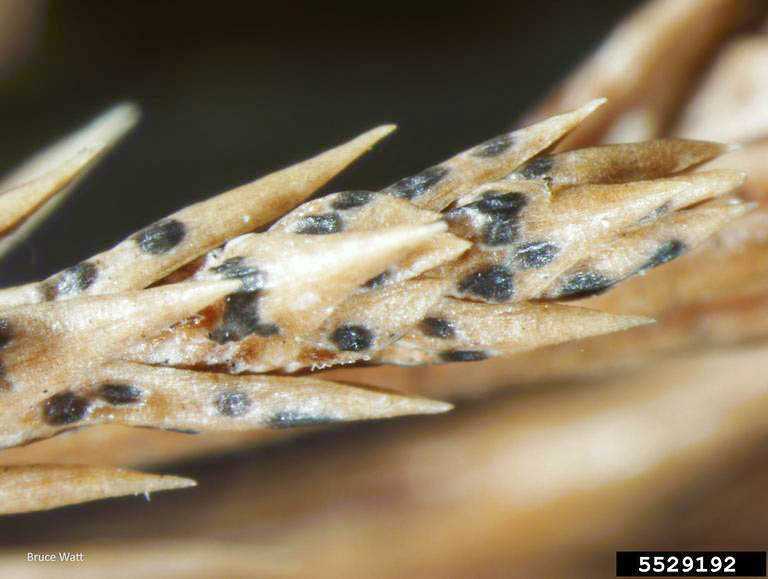

Shute the juniper.
Fertilizing Juniper Miracle
During the period of active growth, which begins in April and lasts until September, mineral fertilizer is added to the water for irrigation every 2 weeks. It is imperative for those home-grown plants because they get nothing nutritious.
During preparation for winter, watering is reduced to 1 time per month (September – October), and from November, stop fertilizing.
If there is an opportunity, it is desirable to add a small layer of humus, but it must be laid out after irrigation with fertilizer, so that there is a time difference of about a week between them.Otherwise, the juniper will begin to actively shed needles or scales.
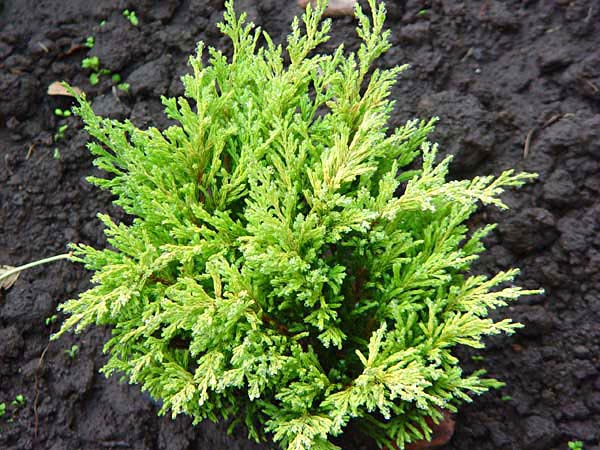

Juniper diseases: shute brown - signs of illness and treatment
Another name for brown shute is brown coniferous snow mold. Snow mold can also be observed after the snow melts and on other plants such as lawn grass. In the spring, after being freed from the snow, on the branches of the juniper you can see yellow or brown needles, entangled in a grayish snow mold - a cobweb mycelium. Over time, the mold becomes black-brown, thickens and, as it were, sticks together the needles. Small black fruiting bodies of the fungus Herpotrichia nigra Karst are formed on the affected needles. Juniper needles turn brown, dry out, do not crumble for a long time. Thin branches die off. The mycelium is preserved in needles and plant debris.
Brown shute spreads more strongly in conditions of high humidity, with strong plantings thickening. Young and weakened plants are most susceptible to disease.
Control measures with brown shute are the same as with biotorella crayfish.
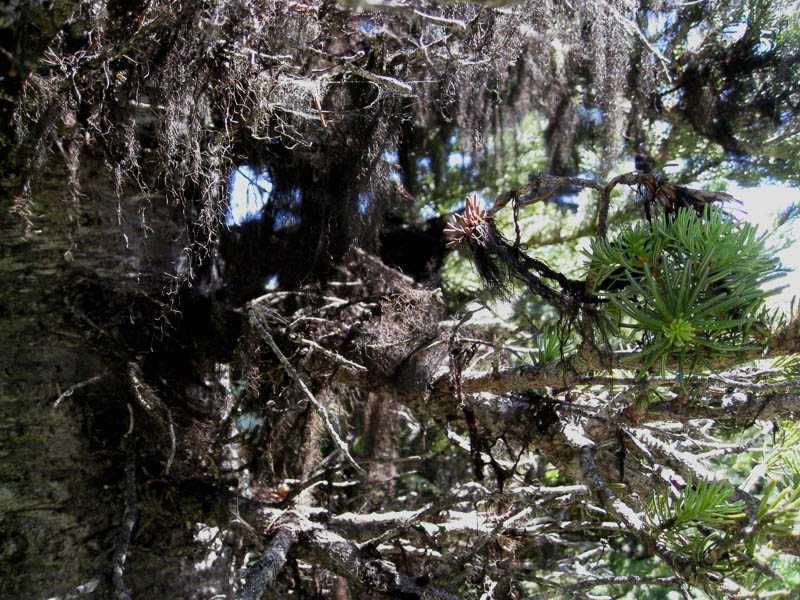

Brown shute on a juniper.
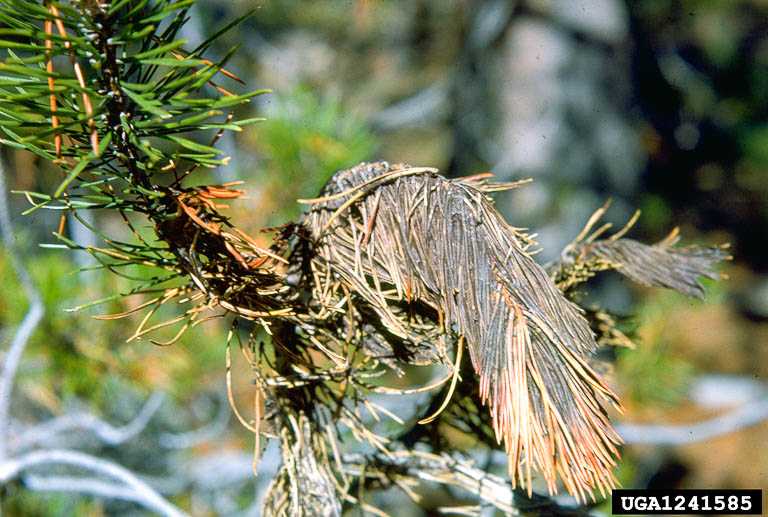

Brown shute on a pine tree.
Transplant and reproduction
When transplanting, make sure not to damage the earthen lump that covers the roots. If even one large root is damaged, the plant will be sore after transplanting.
If there is a desire to grow juniper at home from pine berries, it is necessary that they survive the winter period - stratification.
It is necessary to replant young trees and shrubs every year in the spring. When the plant turns four years old, it is enough to transplant once every three years. Old trees should be pruned as the branches dry out, as they will interfere with the growth and development of new ones.
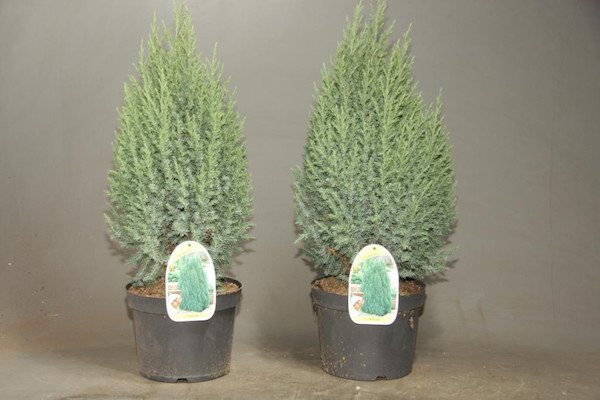

Juniper berries must be taken in black or dark blue for planting. Green berries are fruits that ripen, they cannot be taken for seedlings, but they can be used for treatment. Sow the berries into the soil to a depth of 2 - 3 centimeters, put the pot outside or refrigerate. If the winter is warm, then the berries must be stored in the refrigerator, as they may begin to germinate ahead of time.
Future seedlings are best taken from trees that are already ten years old. Cut off a branch with a small knobby growth, free the base from the needles and plant in the ground. After planting, water well, pour a layer of humus on top and cover with a transparent bag. The next day, remove the bag for 15 minutes so that the condensate evaporates, then cover the plant. Carry out such airing every day, gradually increasing the time. Then remove the bag and continue your gentle care until it is completely rooted. Thanks to the package, it will be easier for the plant to go through the adaptation period.
Juniper is a plant that will bring comfort, peace and well-being to your home. For those who love Crimea, this evergreen plant will become a part of summer and a living gift from Paradise on earth.
Juniper Alternaria: Signs of the Disease and Treatment
Alternaria causes the needles and branches of the juniper to dry out. The causative agent of Alternaria is the fungus Alternaria tenuis Nees. On the brown needles and branches affected by Alternaria, a velvety black bloom forms. The needles fall off, the branches become bare, dry up.
Alternaria often manifests itself when plantings are thickened on the branches of the lower tier. The causative agent persists in the needles and bark of juniper branches, plant debris (not only conifers, alternaria also affects vegetable crops, for example, cabbage, potatoes).
Control measures with juniper alternaria are the same as with biotorella cancer.


Juniper Alternaria.
The most important thing is landing
When buying a seedling, you should transplant it immediately. It is believed that this evergreen plant does not require special soil, but nevertheless, it is correct to follow the elementary rules: to create such conditions that will copy the natural ones as much as possible.Basically, juniper grows between spruce trees, so it is best to purchase soil for planting conifers, or dig up in the forest. Planting in peat soil is permissible.
This shrub, like many plants, does not tolerate much moisture at all, so drainage must be placed on the bottom of the pot. Choosing the right pot is half the battle. It must be chosen so that it is twice the size of the crown of a juniper. After planting, it is best to cover the top layer with a mulch mixture. Pour with water and fertilizer and leave to take root.
Fusarium juniper: signs of the disease and treatment
Fusarium wilt is caused by the fungi Fusarium oxysporum and Fusarium sambucinum. The fungus, through mechanical damage on the bark, penetrates into the vascular system of the plant, clogs it, causing the death of juniper roots. The access of nutrients to the aerial part of the plant stops. The needles, starting from the upper branches, turn yellow, turn red and fall off, the plants gradually dry out completely. On the affected areas of the juniper, especially on the roots and root part, in conditions of high humidity, you can see a grayish-white sporulation of the fungus.
Young and weakened plants are most susceptible to fusarium wilt. Fusarium remains in plant debris. Infection can also occur through planting material or infected soil. Heavy clay soil, insufficient lighting, low-lying areas with stagnant melt and waste water, a high level of groundwater occurrence also provoke the development of fusarium.
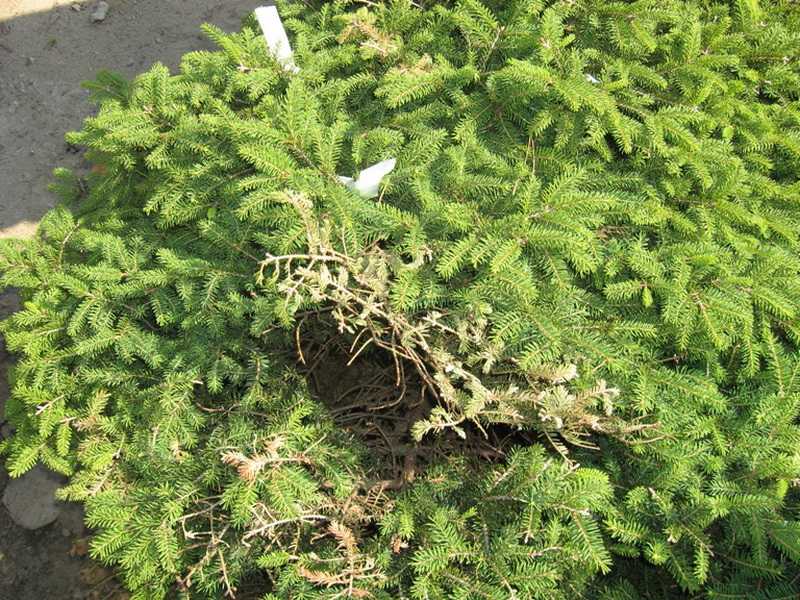

Fusarium of conifers.
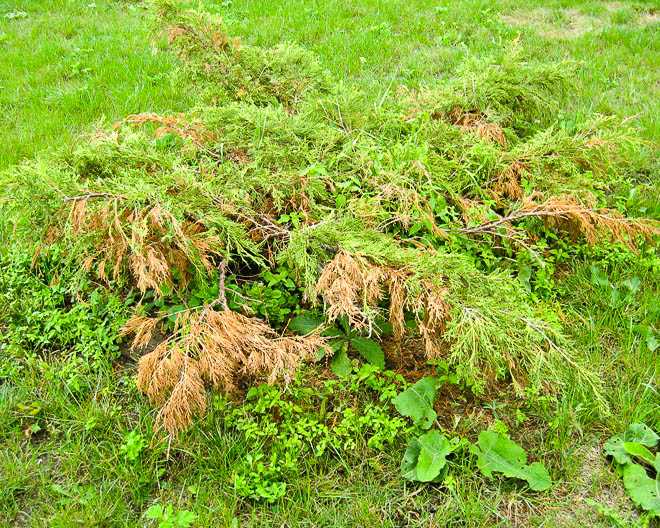

Fusarium juniper.
Control measures with fusarium wilt of a juniper: adherence to agricultural techniques, the basic requirements for planting a juniper. At the first symptoms of wilting and root rot of juniper, the soil under the plant is spilled with a solution of a fungicide preparation: Fitosporin-reanimator, Fitosporin M, Fundazol, Alirin-B, copper sulfate, copper oxychloride, 1% solution of Bordeaux mixture.
For prophylaxis, in spring and autumn, spraying with copper sulfate or a 1% solution of Bordeaux mixture is carried out. At the first signs of fusarium or tracheomycosis, all dried plants, along with roots, must be removed from the site with the complete destruction of all plant debris.
Before planting new plants with an open root system, their roots are treated in a solution of the fungicide Fundazol, Maxim, Fitosporin, etc. Seedlings with a closed root system after planting are spilled with a solution of the same fungicides.
Sometimes, in the spring, the juniper stands with red needles, especially on the south side. This is not an infection, but sunburn... In winter, in January-February, when sunny days come, from dazzling white snow, sun, severe frost, the needles quickly lose moisture, and there is no way to replenish it - the root system is in frozen ground. To avoid this, you need to prepare conifers for winter in the fall. Cover the root system in a timely manner with a thick layer of dry foliage, humus, sand, this will warm the root system and help the juniper cope with dry frost. Also, in the fall, the juniper needs to be wrapped in burlap or agrospan to shade the crown from the bright winter sun.


Conifers sunburn.
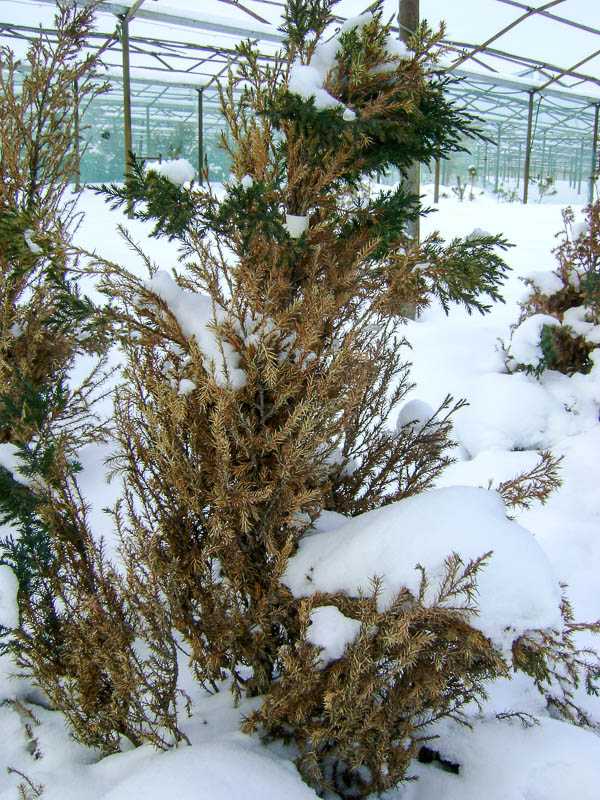

Juniper sunburn.
Juniper has a lot of diseases, and sometimes they can only be dealt with in the laboratory of the Quarantine Service. But we can reduce the risk of developing juniper diseases by the simplest measures: avoid thickened plantings, provide good ventilation for already growing plants, do not plant junipers in strong shade, in low-lying places with stagnant water. When pruning branches, always use a garden pitch in order to prevent mycelium from getting into a fresh cut, and to fight pests - carriers of infection in time.
Linden thyrostromosis: (read more)
Every spring and autumn, it is recommended to carry out preventive spraying with a 1% solution of Bordeaux mixture or copper sulfate not only for conifers, but also for all plants in the garden: fruit trees and shrubs, grapes, roses, hydrangeas and other perennial ornamental plants. It must always be remembered that pathogens can persist not only on junipers, but also on other plants, even weeds. Therefore, it is recommended to remove all plant residues from the beds and flower beds in autumn and spring.
Basic recommendations for planting junipers in the room
When planting and growing a juniper at home in a pot, you must remember the following recommendations:
- For a plant, it is better to pick up a free pot. Junipers grow well when there is plenty of room for the root system.
- At the bottom of the pot, there must be a drainage layer (broken brick, gravel, sand or expanded clay).
- Try not to let the soil dry out, and be sure to drain excess water from the pan.
- In indoor conditions, dry and hot air becomes the greatest danger for junipers.
How to choose lighting for your juniper at home


If the juniper grows in a pot, then caring for the plant begins with choosing the right lighting. In terms of lighting, maintenance must be observed at all times. Juniper loves light, but needs protection from direct sunlight. The plant may die if in the summer it is always in the shade, and in the winter - in the sun. It is advisable to expose the plant to the sunny side, where direct sunlight will fall on it only in winter.
Did you know? In ancient Rome, remedies for snake bites were made from juniper. The Romans also added crushed juniper berries to wine and drank it as a diuretic.
Climatic conditions for growing
Juniper grows in a pot, but how to care for it in terms of the selection of climatic conditions? Surely a similar question is asked by most flower growers. In summer, it is necessary to monitor the temperature regime to avoid overheating of the air. The most suitable temperature for growing should not exceed 25 degrees in summer and fall below 13 degrees in winter. In summer, the juniper pot can be taken outside or on the balcony. Do not forget that the plant loves fresh air, but does not tolerate drafts.
Choosing a container for growing
As mentioned above, a large pot is best suited for a juniper, which will not constrain the root system of the plant. In a large pot, the soil will be slightly porous, which will help to distribute moisture evenly and greatly facilitate the maintenance of the juniper. Growing juniper at home is best done in containers made from natural materials: ceramics, clay or porcelain. Also, the shape and pattern on the container can laconically harmonize with the shape that you will give to the juniper.
Did you know? Craftsmen of Ancient Rus made dishes from juniper bark. The milk stored in such a container did not turn sour even in hot weather.
Soil selection
In nature, juniper is well adapted to marginal soils. It feels most comfortable on dry sandy or podzolic soil with moderate humidity, and can also grow in slightly marshy areas.
All this means that the shrub will thrive in almost any land. There is no need to provide him with a special fertile or composition-specific soil mixture.
Juniper by the yard - trouble for the owner?
It was always advised to plant junipers away from the entrance, again drawing a parallel with the otherworldly connection of the plant: at the facade of the building, you can plant only those plants that repel evil spirits and ward off enemies
... Having planted a juniper at the entrance to the house, you can invite negativity into the house, open the door for the influence of evil forces.
As we are used to, how many people - so many opinions. Some believe in the "invitation" from the juniper to the house, while others are sure that no plant can protect them better than conifers. Take, for example, the people's love for larch - a plant that saves from fires and evil. By planting a juniper at the entrance to the house, as some believe, you can confuse the witch
- until she has counted and cut off all the needles, she will not enter the house. The arguments cover each other like cards in a deck:
the coffin with the deceased is covered with juniper
cover lonely graves in the fields.
Believe it or not, signs and beliefs are everyone's business
... If you wish, you can safely switch to a good wave and consider that the juniper protects you, and the plant will really become a talisman. At least from mosquitoes - this is from the functions of conifers exuding into the air
phytoncides useful for health
, and to calm the rebellious spirit.
↓ Write in the comments, do you think that keeping a juniper at home is impossible? Would you plant a plant on the site? What signs related to juniper do you know about?
The juniper shrub that we grow in our gardens is shrubs with a height of 1 to 3 m, although sometimes gardeners prefer to grow tree-like forms of plants - the height of a tree-like juniper is from 4 to 8, and sometimes up to 12 m.The stem is erect, branched. The bark of young plants is reddish-brown, old juniper usually has a brown bark. Juniper leaves are acicular or scaly, collected in whorls of several pieces. Juniper is a dioecious plant: female cones, fragrant with a spicy sweetish taste, have a diameter of 5 to 9 mm, an oval shape and a green color. Male cones look like elongated oval spikelets of bright yellow color, located in the axils of the leaves. Pine berries ripening in the second year, in which there are a dozen juniper seeds, have tightly closed fleshy scales.
Useful Tips
- Do not neglect the preventive treatment of plant roots before planting - this will help get rid of diseases and pests in the future;
- Choose a well-lit and spacious place for planting junipers in advance;
- When choosing seedlings, consider the size and shape of an adult plant of this variety;
- In order not to forget about watering and pruning the plant - fix the dates in a calendar or notebook.
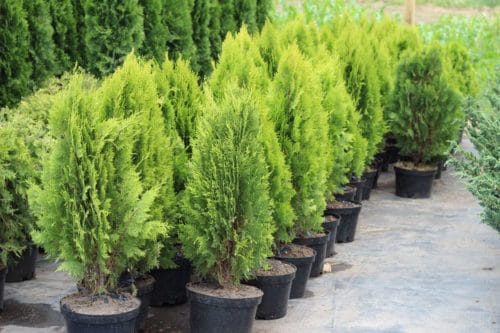

Beautiful and healthy junipers can become a real garden decoration if you regularly monitor their condition and do not forget to take care of the plant at any time of the year.
Juniper is one of the most unpretentious and useful garden shrubs. It is able to give the landscape a luxurious look, make the air cleaner, and make your stay in the country more comfortable. Relying on our advice, you can easily grow this plant on your site.
Simple ways to propagate an evergreen indoor culture
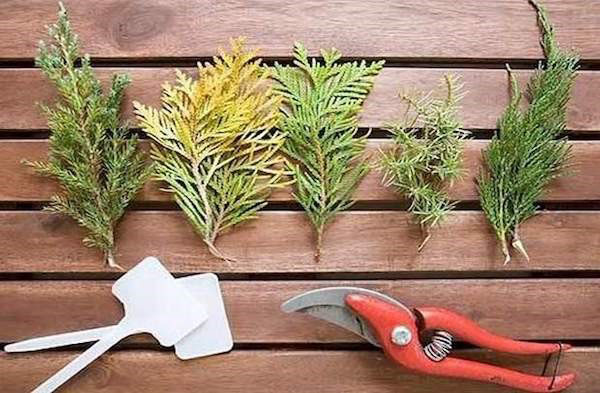

There are 2 traditional options for growing junipers at home in a pot: using cuttings and seeds. The first method is considered to be quite simple. An adult plant is used as a planting material, which is at least 8 years old.
Twigs are cut in the spring. Each of them should be about 10 cm. The cuttings are placed in soil consisting of sand and peat. The boxes are covered with foil and placed in a place protected from the sun. In order for the seedlings to develop successfully, they are regularly watered and sprayed with a spray bottle. After about 62 days, the seedlings will have roots. When they get stronger, they are transplanted into containers or flowerpots.


The question of how to grow a juniper from seeds is of interest to many gardeners, since this is not an easy task.Due to the poor germination of the plant, this method is most often used by breeders. However, do not give up, some of the experiment was a success.
The "creative process" begins with the preparation of the planting material. In late autumn, it is placed in containers with soil. Then they take it out into the street for 4 months. When exposed to air, the seeds undergo a special stratification. At the end of spring, they are sown in pots, which are placed in a room where there is a lot of light. The soil is watered regularly so that it does not dry out. The first seedlings will appear only after a whole year.
Homemade recipes
Feeding for cypress can be made independently from home remedies.
Mulch
You can enrich the soil under the juniper by mulching the trunk circle.
Mulch:
- maintains the optimal acidity of the soil;
- delays introduced useful substances, preventing their leaching and weathering;
- improves the composition of the soil, contributing to the development of soil microflora;
- protects the plant from the appearance of weeds that draw off food.
For preparation, hay, straw and humus mixed to a loose state are suitable, which are laid out in a layer up to 10 cm in the area of the trunk circle. The protective layer is changed after loosening and weeding. The mulch laid for the winter is moved aside in order to avoid the onset of rotting processes and the development of fungal diseases.
Compost
Overripe compost can be a good top dressing. It is made from dry grass and food waste. Sprinkle the finished product on the soil under the juniper, forming a layer of 10 cm.
Seed breeding method
It is quite difficult to grow a plant from seeds, since it has poor germination. But if you do decide to grow a shrub at home from seeds. Then in this case, you need to plant a juniper in the autumn in boxes. During cold weather, the boxes should be taken outside, where they should stand for 4 months. The seeds preserved after the cold weather are planted in pots at the end of spring and continue to be stored in the fresh air. Usually, seedlings can be seen only the next year after planting the seeds. It is not easy to grow junipers from seeds at home, but if you create favorable conditions, then it is quite possible. In order for the plant to grow and develop perfectly, then the earthen coma should not be allowed to dry out. It is necessary to put a shrub in a well-lit place, and apply special fertilizers. Cutting method
Reproduction of a juniper at home using cuttings is easier than using seeds. But in order to carry out this procedure, the plant must be at least 8 years old. In the spring it is required to cut a stalk 10 cm long. Then it is placed in peat with sand, placed in a shaded place and covered with a film. The shrub must be constantly sprayed. After 2 months, roots will appear. It is during this period of time that the juniper needs to be transplanted.
How to choose a seedling
The best planting material is bought in special containers. Such conifers develop well after transplantation. Another option is a tree with a lump of earth, which is wrapped in wet burlap.
Recommendations for choosing a seedling:
- It should be 3-4 years old, such a plant tolerates transplanting better.
- The root system is closed, but open is also allowed.
- The color of the needles is uniform, corresponding to the variety.
- There should be no cracks or other damage on the bark of the trunk.
Preparing juniper seeds for planting
To improve seed germination, it is recommended to use the method stratificationui. This is a technique for long-term keeping of seeds at a certain, formed temperature. With this reproduction, cones must be collected from the very beginning of autumn. It is best to leave the closed buds in a dry, warm place until they open, then remove the seeds.
Wash the juniper seeds for about 1 week.Unripe to withstand for about four months and sowing before winter, neglected we withstand 3 months in a period of warmth at zero temperature.
You can also do scarification. In a jar, you need to put a coarse, hard sandpaper, pour out the seeds and fry vigorously until their hard shells are broken. It is better to sow such seeds immediately after processing.
Snowing method : they sow seeds in wooden boxes and put them under the snow for the whole winter, in the spring they transfer them to a warm room and cover them with foil. Only after proper preparation of seeds can they be planted.
How to Avoid Common Feeding Mistakes
When choosing fertilizers for feeding a juniper, it is necessary to take into account a number of important points that can lead to serious mistakes in the care of coniferous shrubs:
- Useful substances must be selected based on the composition of the soil, as well as on the requirements of a particular culture. The wrong choice of top dressing is fraught with a change in the level of acidity of the soil, which will certainly affect the condition of the plants.
- Compliance with the recommended dosages when applying fertilizers is vital, since an excessive concentration of active substances can lead to burns of the plant root system.
- It is important to follow a certain sequence of fertilization procedures, as well as the necessary intervals between them. Otherwise, an excess of one or another element is formed in the soil, which negatively affects the quality of the soil and the condition of the plants.
Appearance
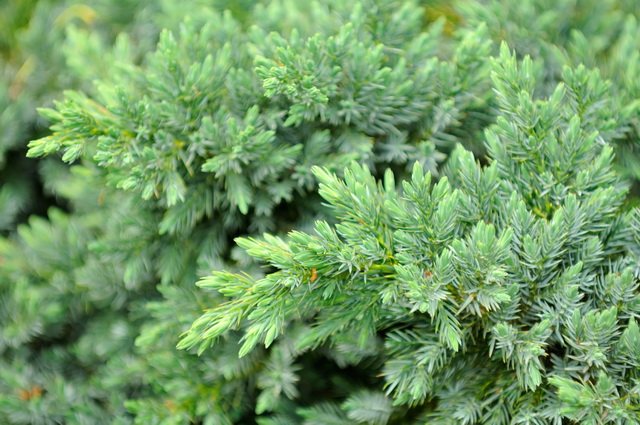

A prickly but beautiful juniper. Illustration for this article is used under a standard license.
Originally from India and Asia, a small evergreen coniferous shrub 1-4 m in height. The trunk is straight with gray-brown cracking bark, the lower branches are ascending or prostrate, the rest are erect. The needles are sharp, tough, prickly. The female cones are green, the male cones are yellow. Cones ripen in the second year of life, they contain seeds that, when ripe, form berry-like bluish-black fruits with a blue bloom - "cones - berries".
The smell when rubbing the cones is peculiar, aromatic, the taste is sweetish, spicy. Juniper cone berries contain an essential oil that has disinfecting properties. Baths are especially useful for arthritis, gout and rheumatic diseases (2 kg of young branches and a handful of berries, pre-boiled in bath water).
In garden centers, the selection of juniper seedlings is so diverse that varieties belonging to the same type of juniper can differ significantly from the external characteristics. Juniper is ideal for planting as a separate plant in the center of the landscape composition, and in group planting.
How to prepare top dressing yourself
Mulch
Mulching is a great way to enrich the soil. You can use special purchased mixtures for it, as well as straw, tree bark, coniferous needles. The material is distributed in the area of the trunk circle so that it reaches 10 cm in thickness. After wintering, the mulch should be moved away from the base of the shrub to avoid decay.
The benefits of mulching include:
- maintaining the required level of soil acidity;
- the development of favorable microflora in the soil, which contributes to plant nutrition;
- mulch acts as an obstacle to the appearance of weeds, which delay the nutrition of the juniper;
- prevention of rapid weathering and leaching of useful elements from the substrate.
Compost
Overripe compost is an excellent top dressing for cypress trees. The technique of use is similar to mulching - a 10-centimeter layer is formed under the plant, only dry grass is used as a material in most cases.
Basic rules for caring for culture
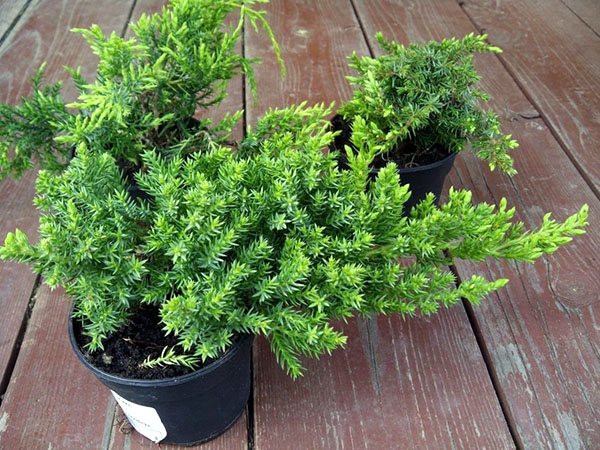

Reasonable juniper care includes several basic procedures:
- regular watering;
- spraying the ground part of the plant;
- top dressing of the soil;
- planned pruning;
- transfer to a new container.
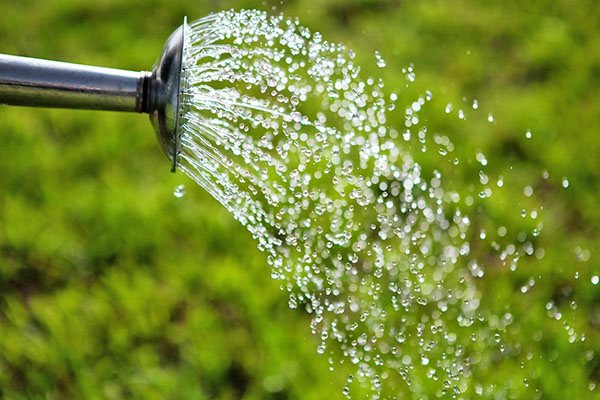

Typically, this evergreen crop loves moderate moisture. In the summer heat, the procedure is carried out as the topsoil dries out. Enough once for 2 days. In winter, the plant is watered 2 times a month. Regardless of where the juniper is located: in the shade or in the sun, it needs regular spraying. In summer, moistening is done at least 2 times a day, and in winter as needed.
The main task of the gardener is to prevent the potting medium from drying out.
Having got acquainted with an evergreen plant, you will probably want to grow it in your home. To do this, you should follow just a few simple rules for planting a plant. Carefully look after and find a worthy place for him in the living quarters. Let the luscious greenery and resinous aroma of juniper at home in a pot always bring joy to true fans of exotic indoor plants.
Read also: Growing lupines: all about care and planting
How to keep conifers at home - video
The secret of attractiveness is a slender "figure"
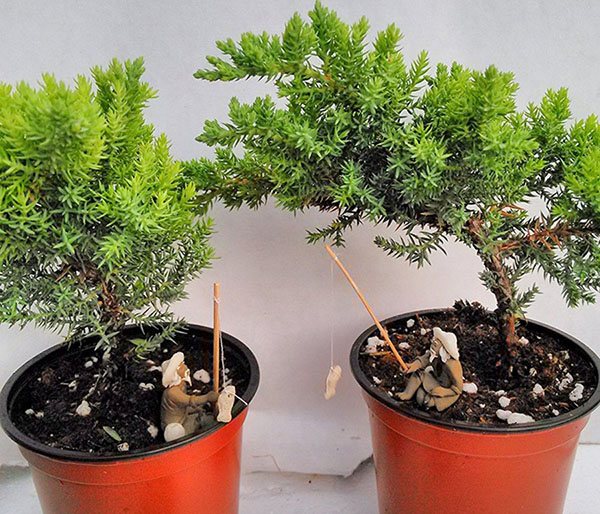

A native of the Cypress family, it is found almost throughout the Northern Hemisphere. It adorns mountain slopes in the tropics and endures cold weather in the Arctic Circle. Biologists count about 60 species of such plants.
Each of them has its own flavor, but all are united by a sophisticated appearance:
Almost all decorative home junipers are distinguished by a slender cone-shaped or ovoid crown. Among the dense needles (in its axils), miniature yellow spikelets are formed. Cones, consisting of light green scales, rise next to them. At the time of lush flowering, male spikelets pollinate female cones, after which bright blue fruits appear on the branches. A truly magnificent sight!
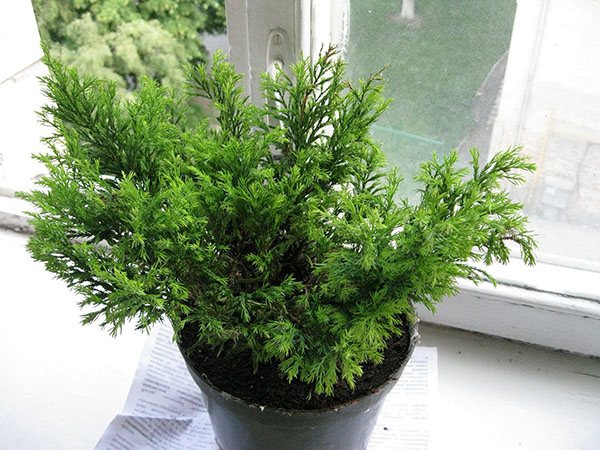

Not all types are suitable for growing juniper in an apartment, but only undersized varieties. The most popular ones are:
Many people like the horizontal Wiltoni juniper, which has blue needles. It grows very slowly, so it will be able to decorate the interior of a living space for a long time. A suitable variety of juniper for the home "Compressa" is distinguished by its exquisite column shape. An adult plant grows only 60 cm in height, which allows it to be placed in any corner of the room.
In its natural environment, the juniper reaches about 600 years. Indoor counterparts live much less, but this is enough to enjoy their beauty.
For fast growth
Juniper, like all conifers, lives a long time, so its growth is not fast. But you can make the young seedling grow more actively (the rooting process went faster). For this, growth stimulants are intended. The universal drug "Radifarm" is considered effective.... A young bush needs 300-500 ml of the solution obtained after combining 10 liters of water with 25 ml of the drug. Two weeks later, the same amount of funds must be deposited again. To enhance the development of the root system, Viva is suitable (apply according to the instructions).
Important! These two products in combination provide 100% plant survival.
Foliar application of growth stimulants can be used... Among the suitable drugs, a group of chelates (organometallic complexes) is in demand. They not only speed up the rooting process, but also saturate the shrub with essential nutrients. Top dressing should be carried out at intervals of two weeks until the end of August inclusive. You need to use 20 g of the product diluted in 10 liters of water.


Proper care is the key to intensive growth of the juniper. And this is not only timely feeding, but also a number of other measures to ensure comfortable conditions for the growth of decorative culture.
Pruning bushes
You need to cut the juniper bushes carefully, since due to the slow growth, the recovery will take a long time, the main task is to remove all dry branches that interfere with the growth of the bushes. To form a hedge from it, protruding shoots should be pruned. This representative of the cypress family is quite frost-resistant, but the seedlings of the first year of planting should be covered for the winter. If an adult plant has a spreading crown, then for the winter the branches of the crown must be tied with twine.



